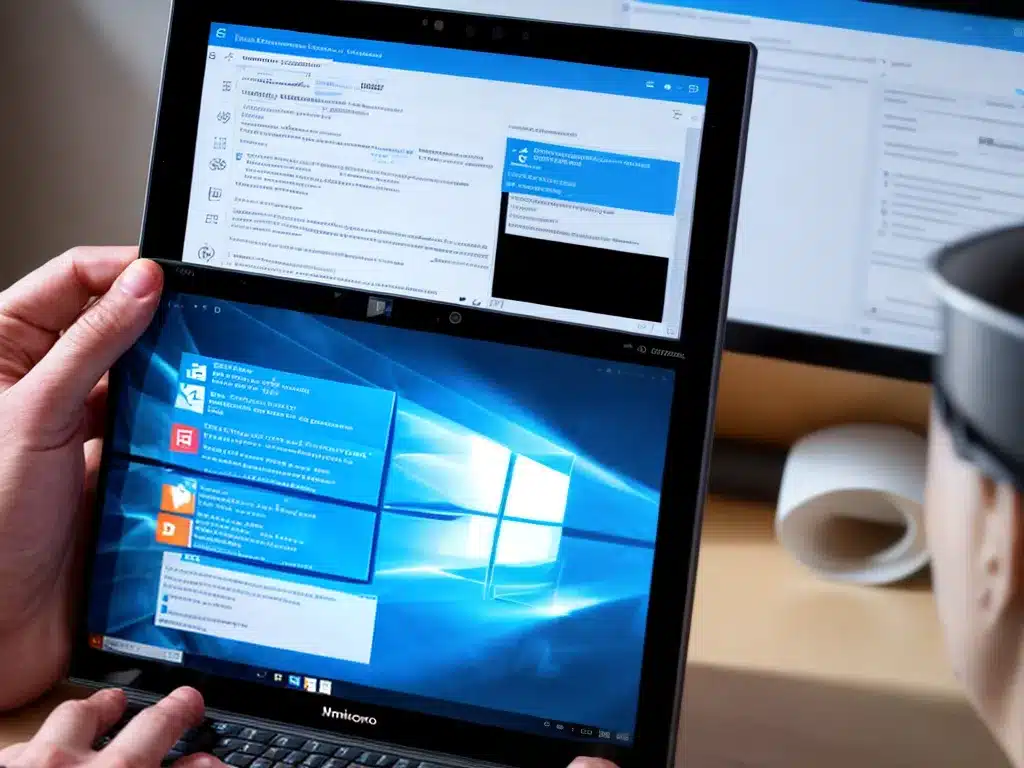
Introduction
Backing up your operating system is one of the most important things you can do to protect your data and ensure business continuity. With Windows 11, Microsoft has made some improvements to the built-in backup utilities which make automating backups easier than ever. In this guide, I will walk you through the steps to setup automatic and continuous file history backups to safeguard your Windows 11 system.
Enable File History
File History is the built-in backup utility in Windows 11 that can continuously backup your files and allow you to restore previous versions. Here are the steps to get it setup:
- Open Settings and go to System > Backup.
-
Under the Backup Using File History section, click on Add a Drive and select an external drive to use for backups.
Note: The external drive must be formatted as NTFS and have sufficient storage space for the backups.
-
Once selected, Windows will automatically begin making periodic backups of your libraries, desktop, contacts, favorites and other folders to the designated drive.
-
You can adjust the backup frequency by clicking on More options and changing the Back up my files setting. Frequent backups are recommended.
With these simple steps, File History will now automatically make periodic backups in the background as you work. Next, I will show you how to setup a daily system image backup.
Schedule System Image Backups
While File History handles backup up your personal files and folders, it’s also important to maintain periodic system image backups that capture your Windows installation along with apps and settings. Here is how to automate this process:
-
Go to Settings > Update & Security > Backup and click on Go to Backup and Restore (Windows 7).
-
Click on Set up backup under the Backup and Restore (Windows 7) section.
-
Choose your backup destination – this can be an external drive or a network location and click Next.
-
Select Let Windows choose (recommended) to automatically backup system image and files. Click Next.
-
Specify a regular backup schedule, such as daily or weekly based on your requirements.
-
Review settings and click Save settings and run backup to confirm setup.
This will create a system image backup on the schedule specified and incrementally backup changed files at each interval. Store your external drives safely after backups complete.
Verify Backup Integrity
It’s important to periodically verify that your automated backups are happening successfully and backup files remain intact. Here are some ways to test integrity:
-
Check History – Go to Settings > Backup and under File History you will see the last backup date and time. Check if periodic backups are being taken.
-
Browse Files – Connect your backup drive and explore the folder structure to ensure files from various locations have been captured in backups.
-
Do Test Restores – Perform test restores of random files/folders to confirm backups are not corrupted and data can be restored successfully when required.
-
Review Logs – Backup tools like File History log details of all operations. Review logs to check for backup errors, failures or exclusions.
Conclusion
Automating OS backup is critical to safeguard your system from data loss in case of hardware failures, ransomware attacks or accidental deletions. With the built-in tools in Windows 11 and the steps outlined in this guide, you can setup automatic file history and system image backups to continuously protect your computer with minimal effort. Periodically check in on the backups to verify integrity. This will provide invaluable peace of mind that your system and data are protected.












